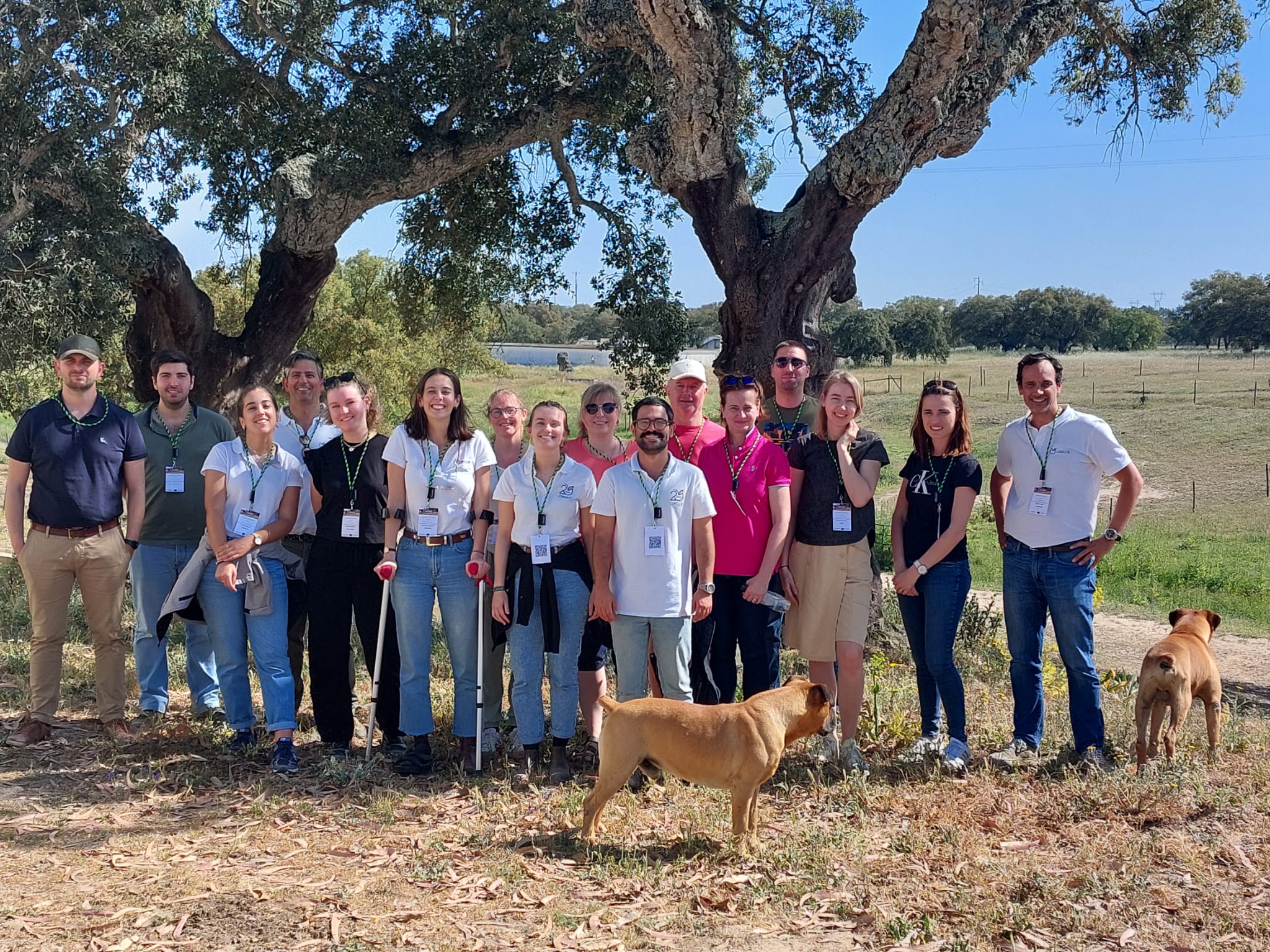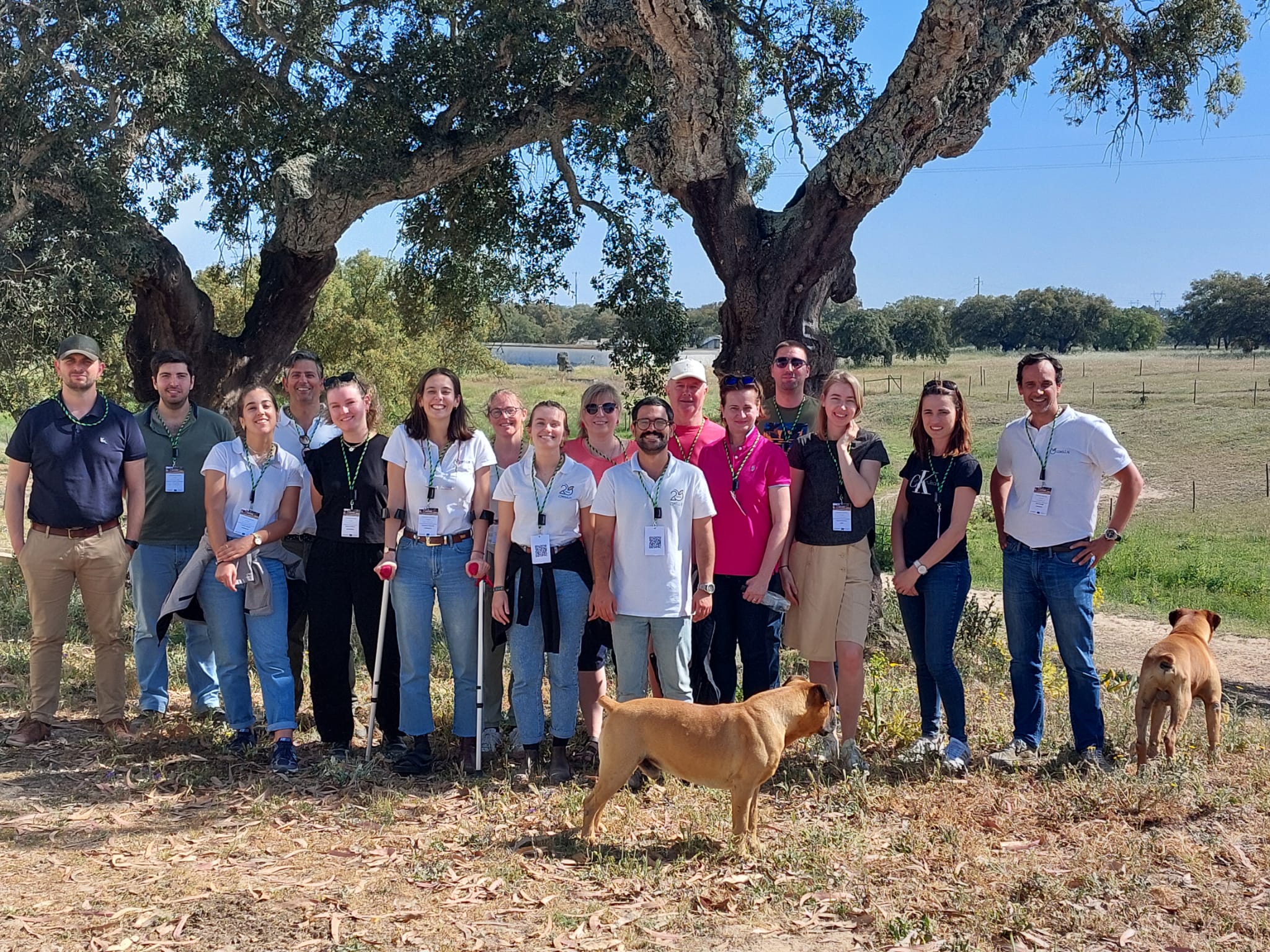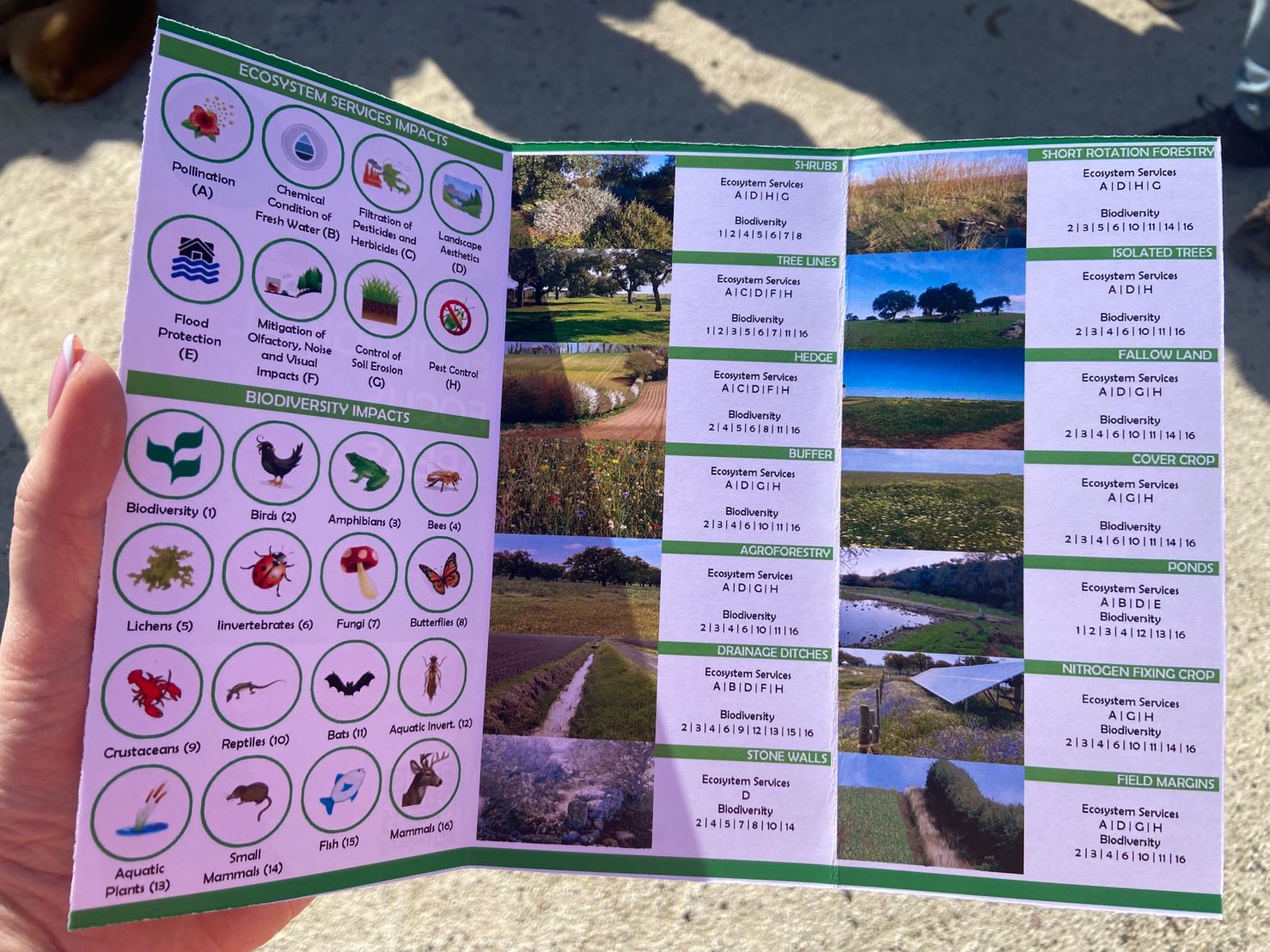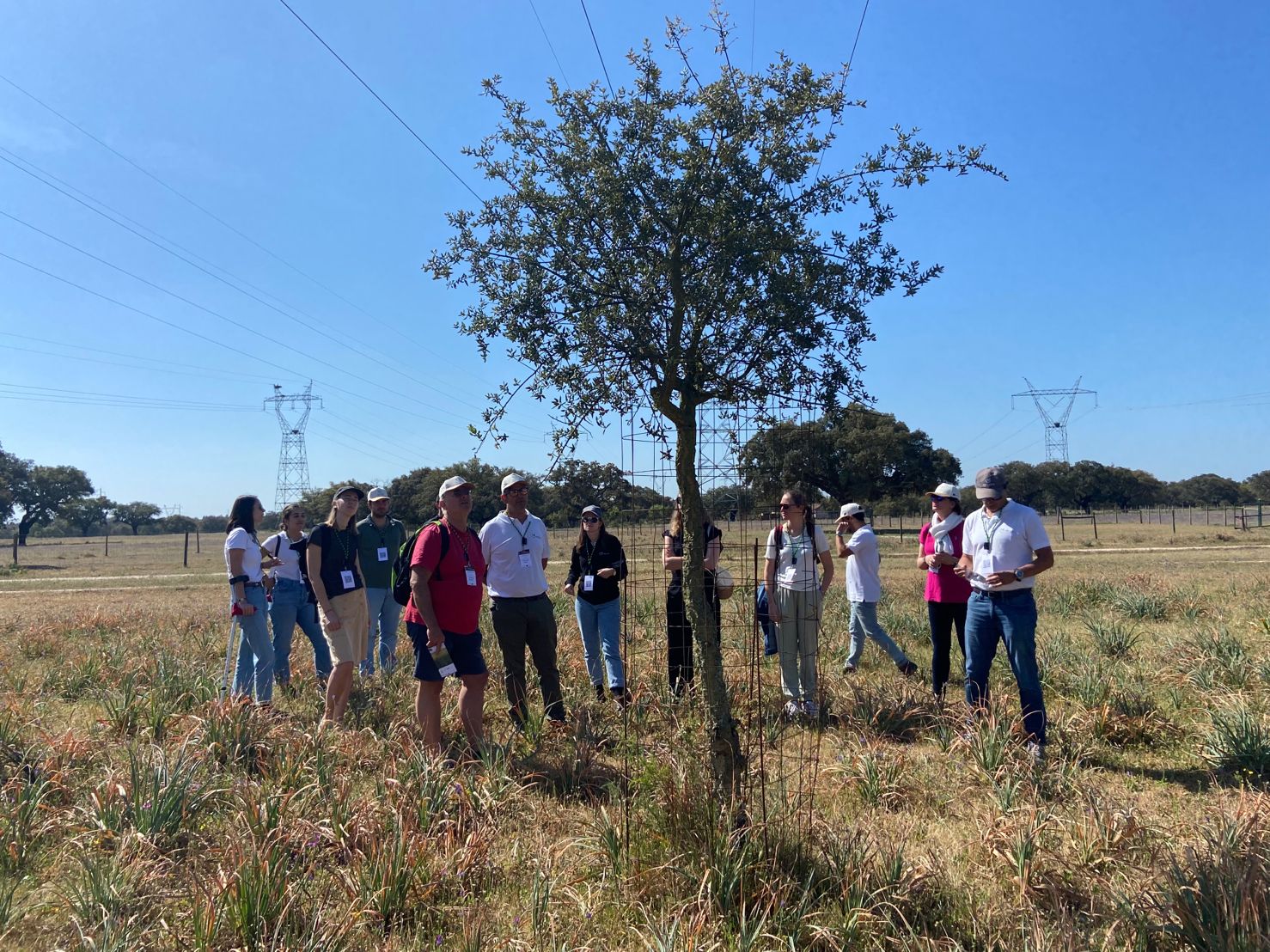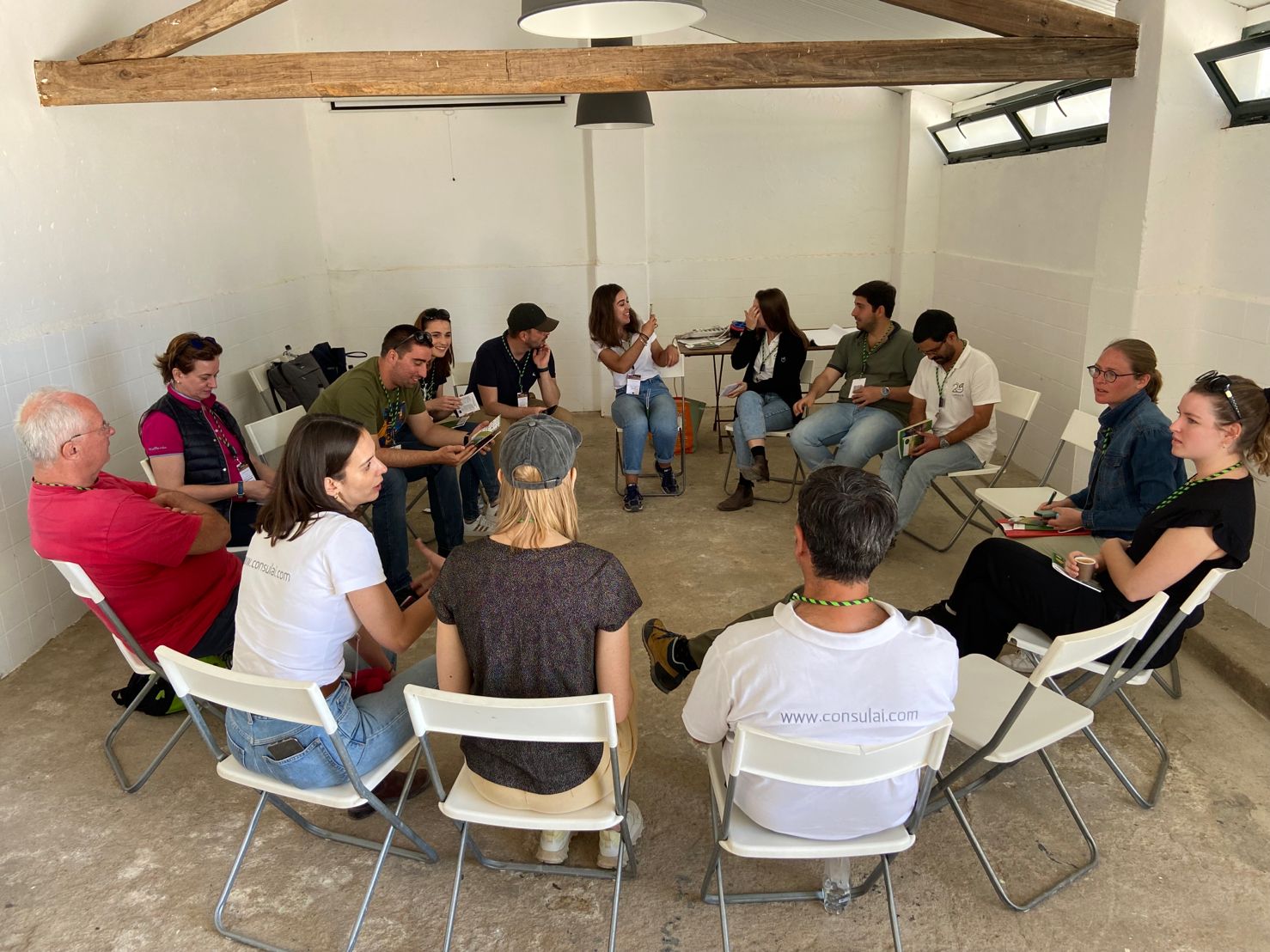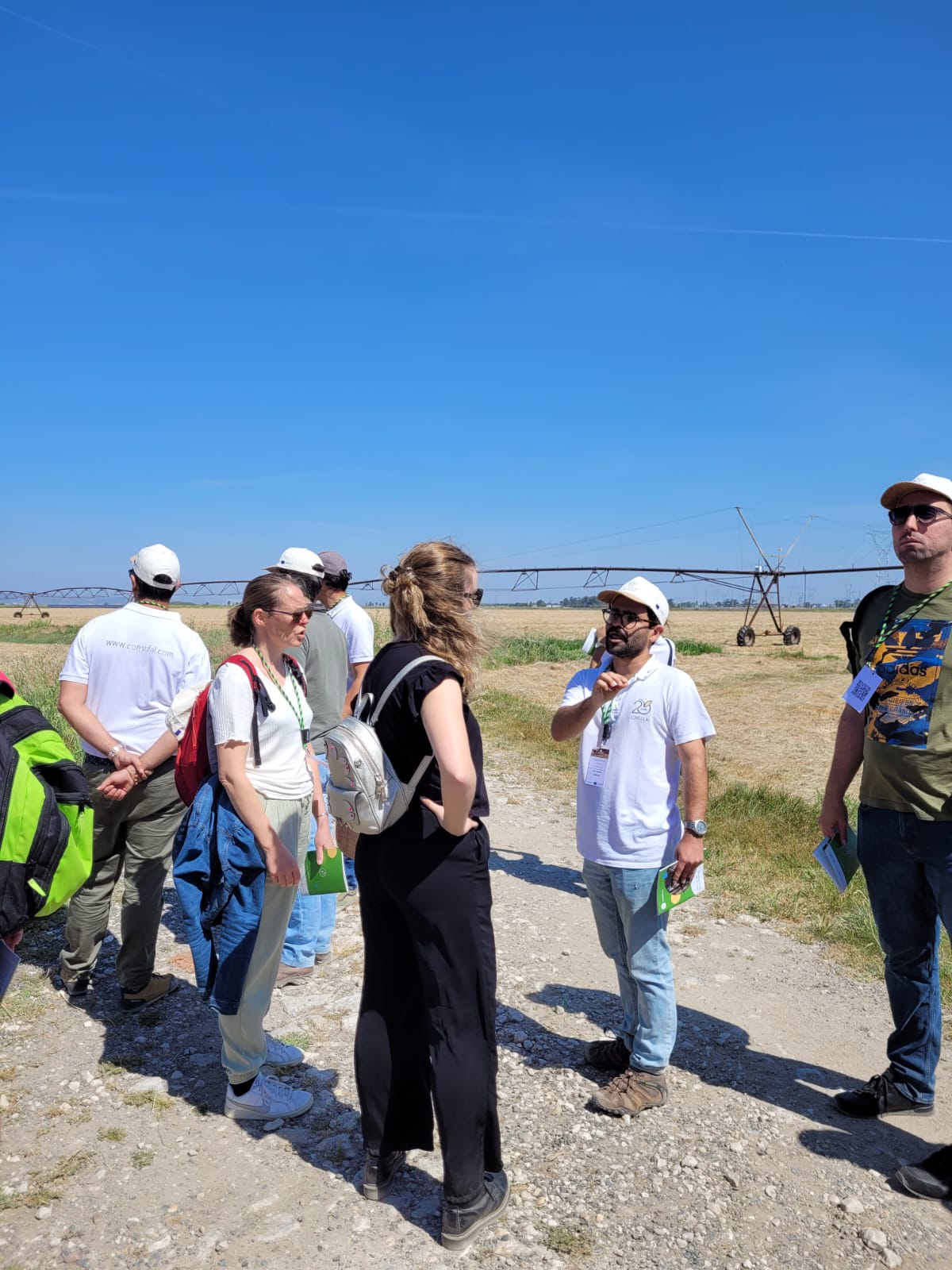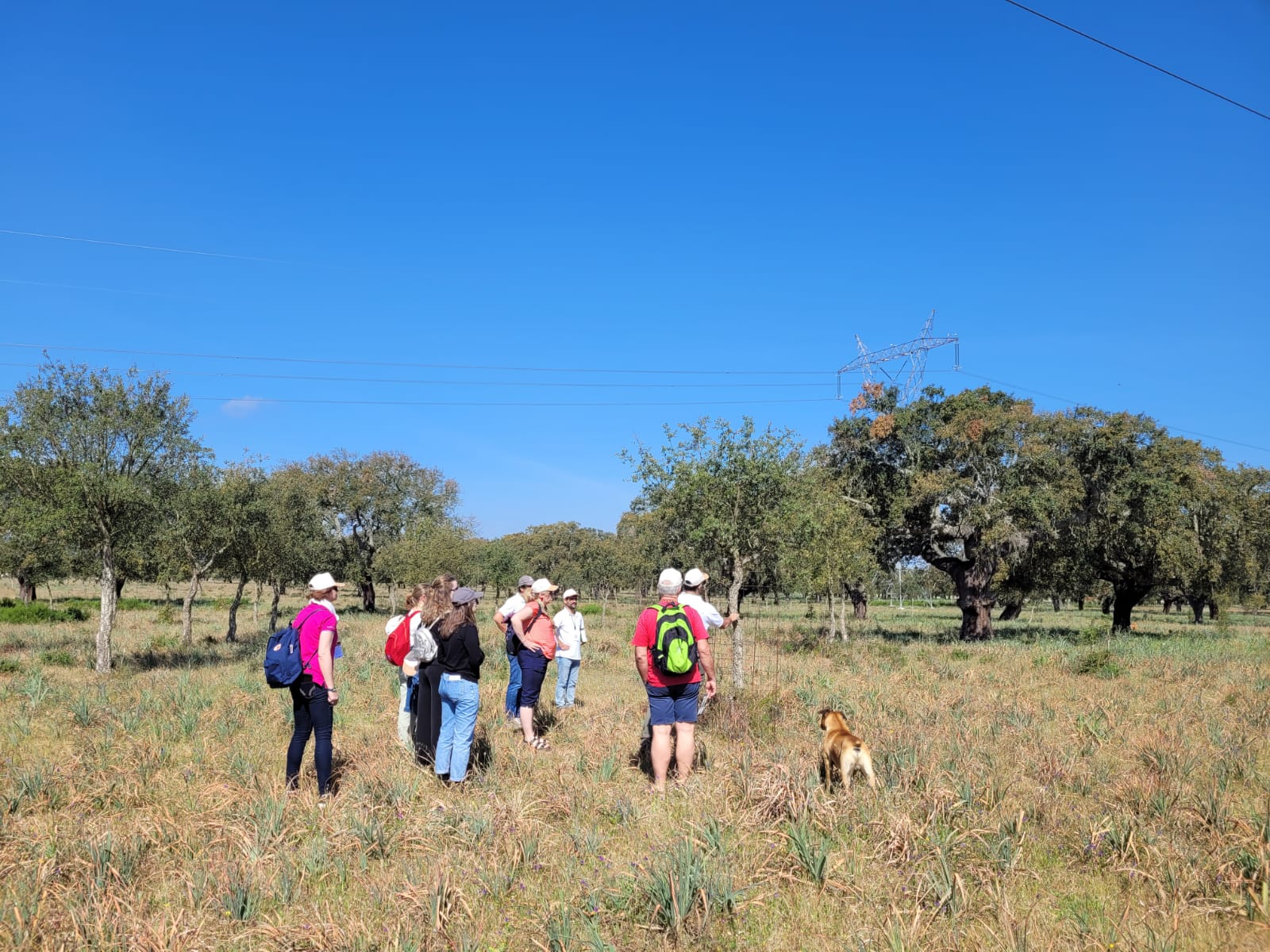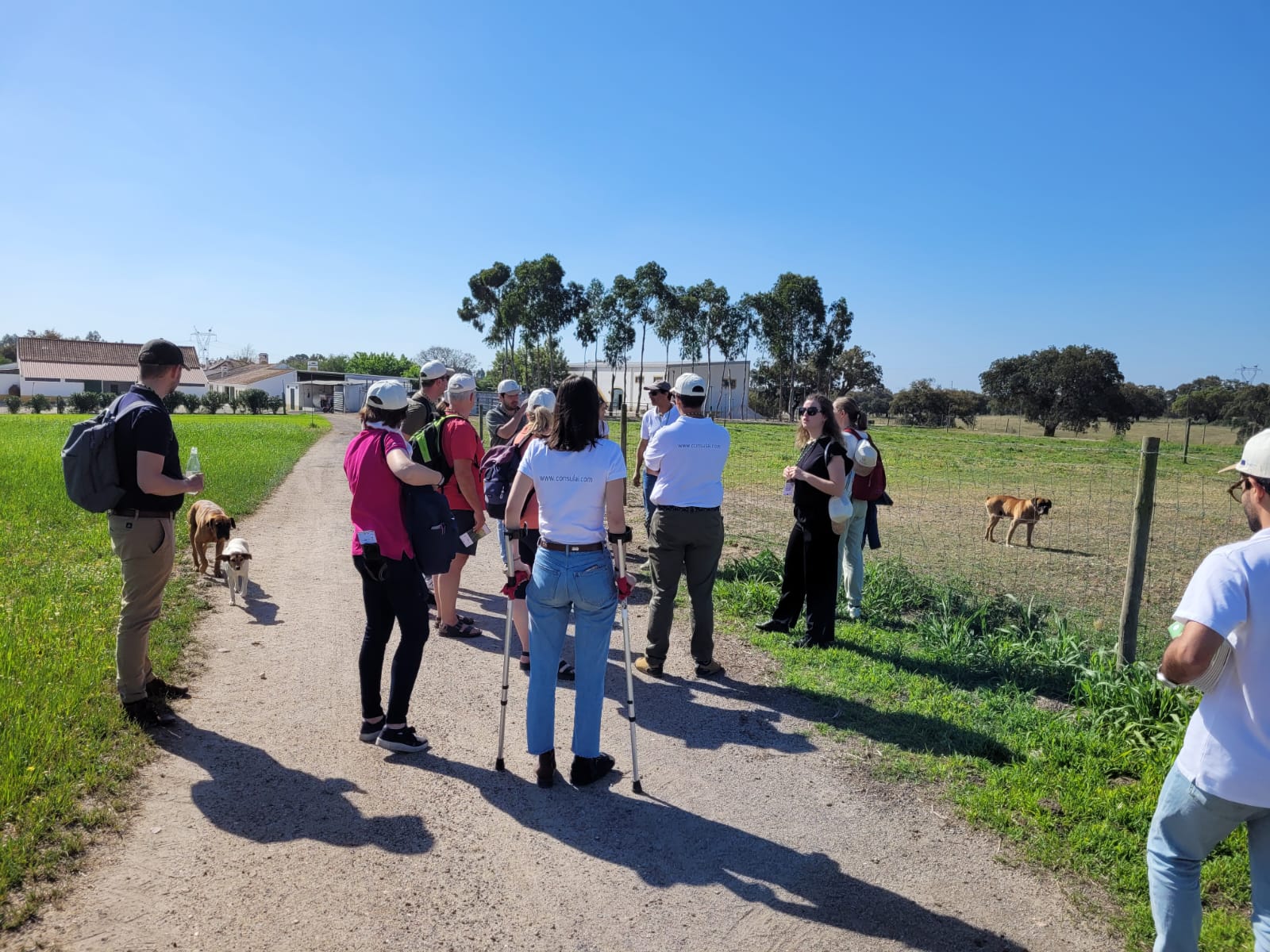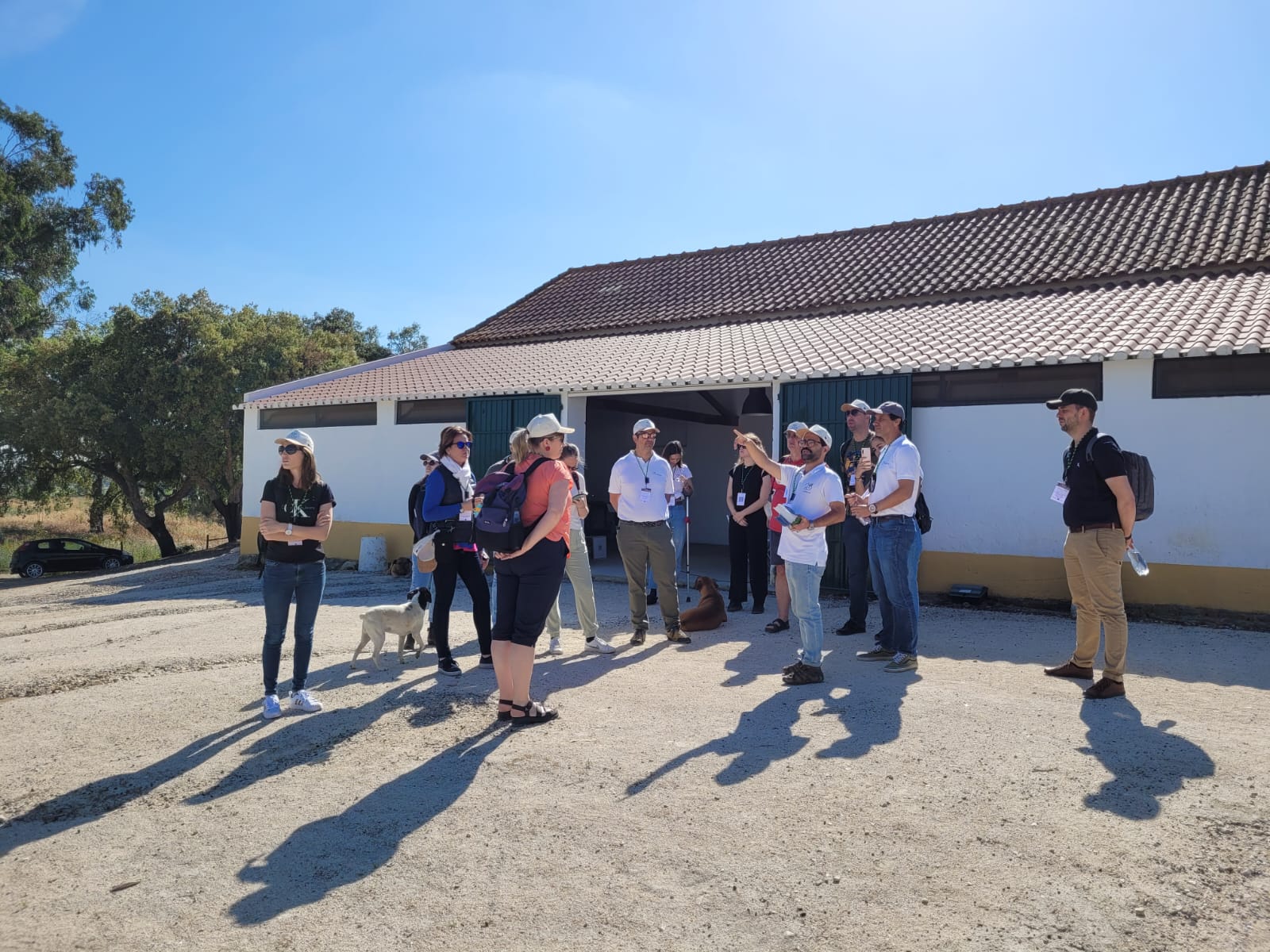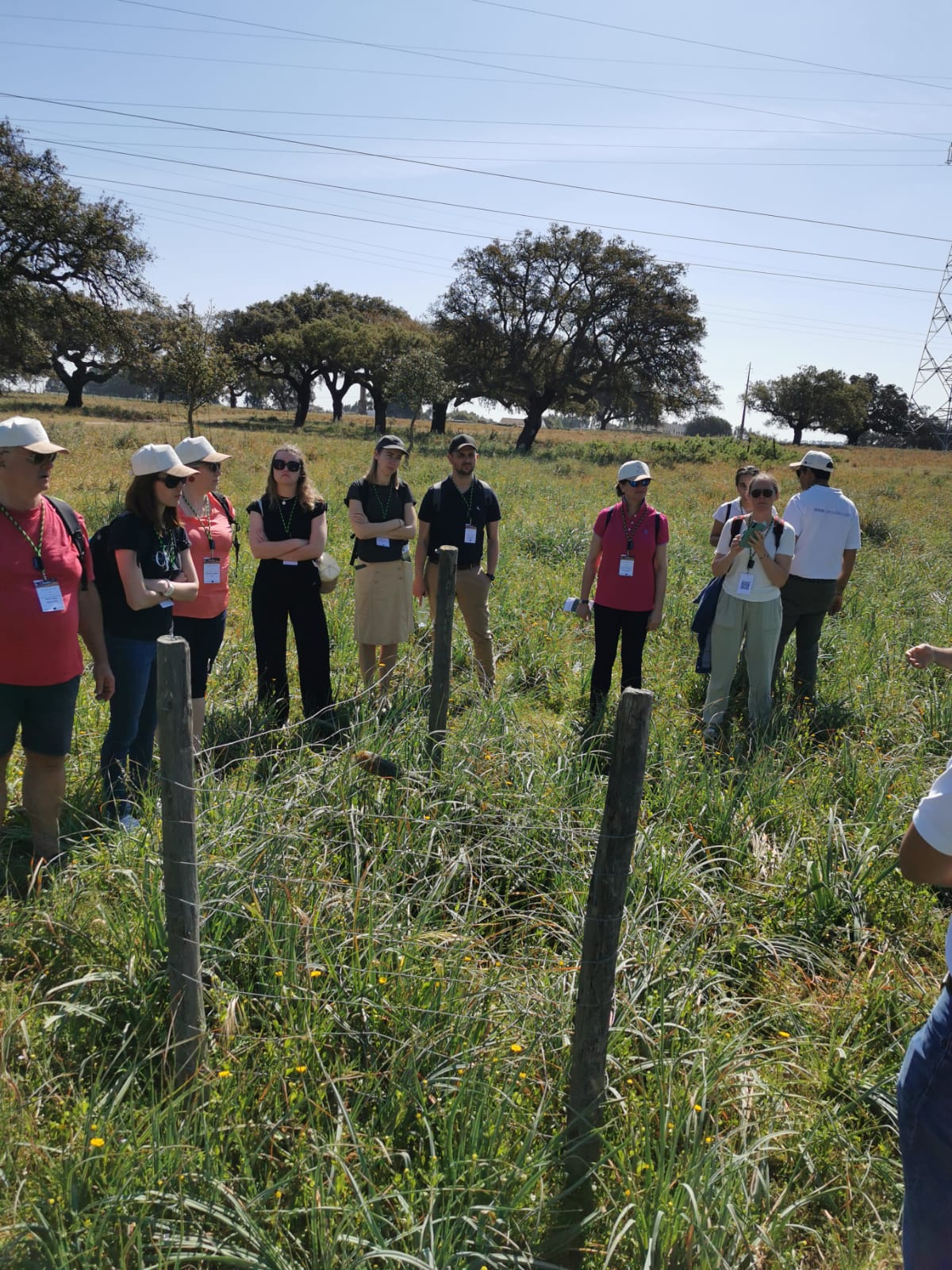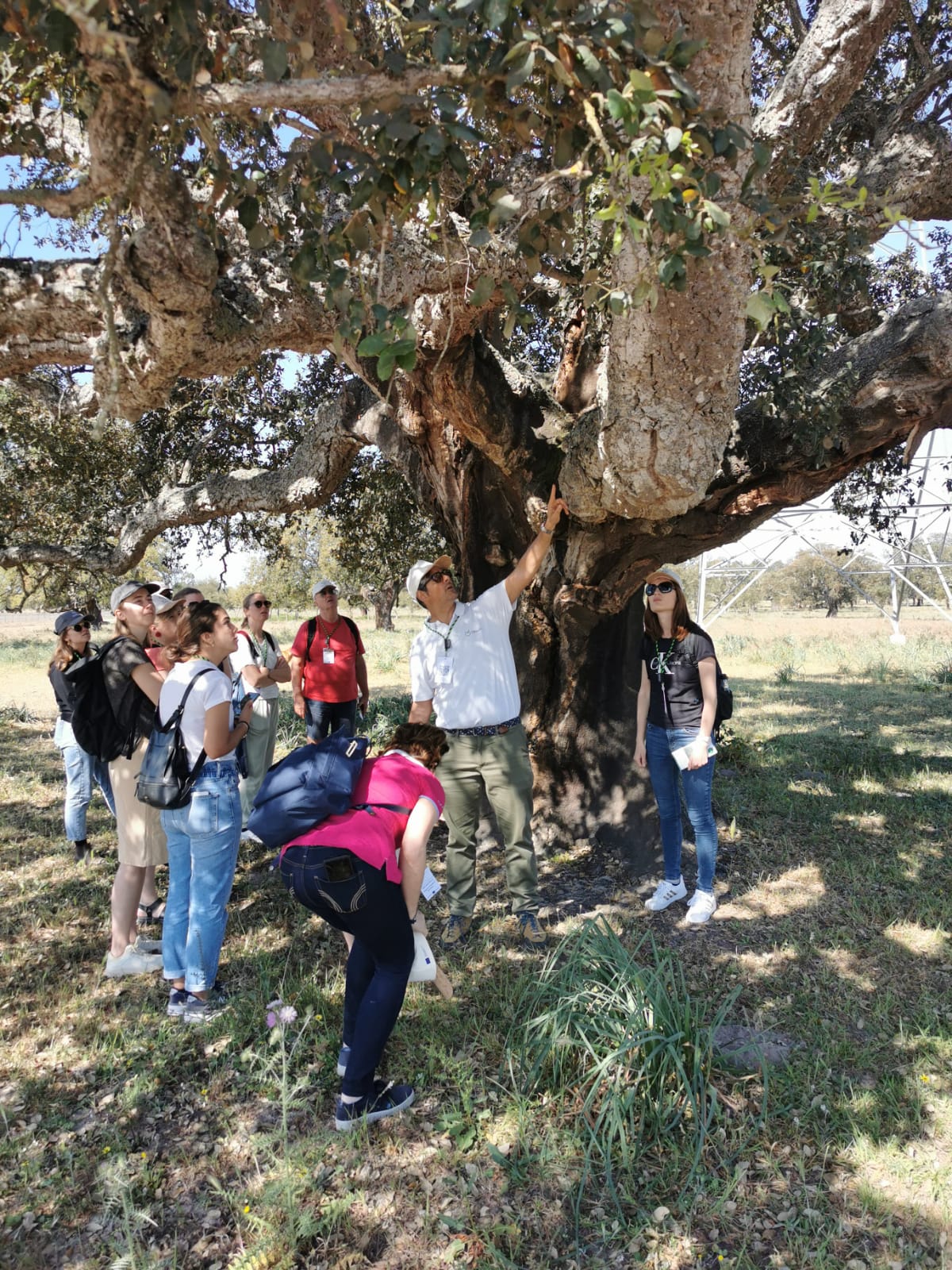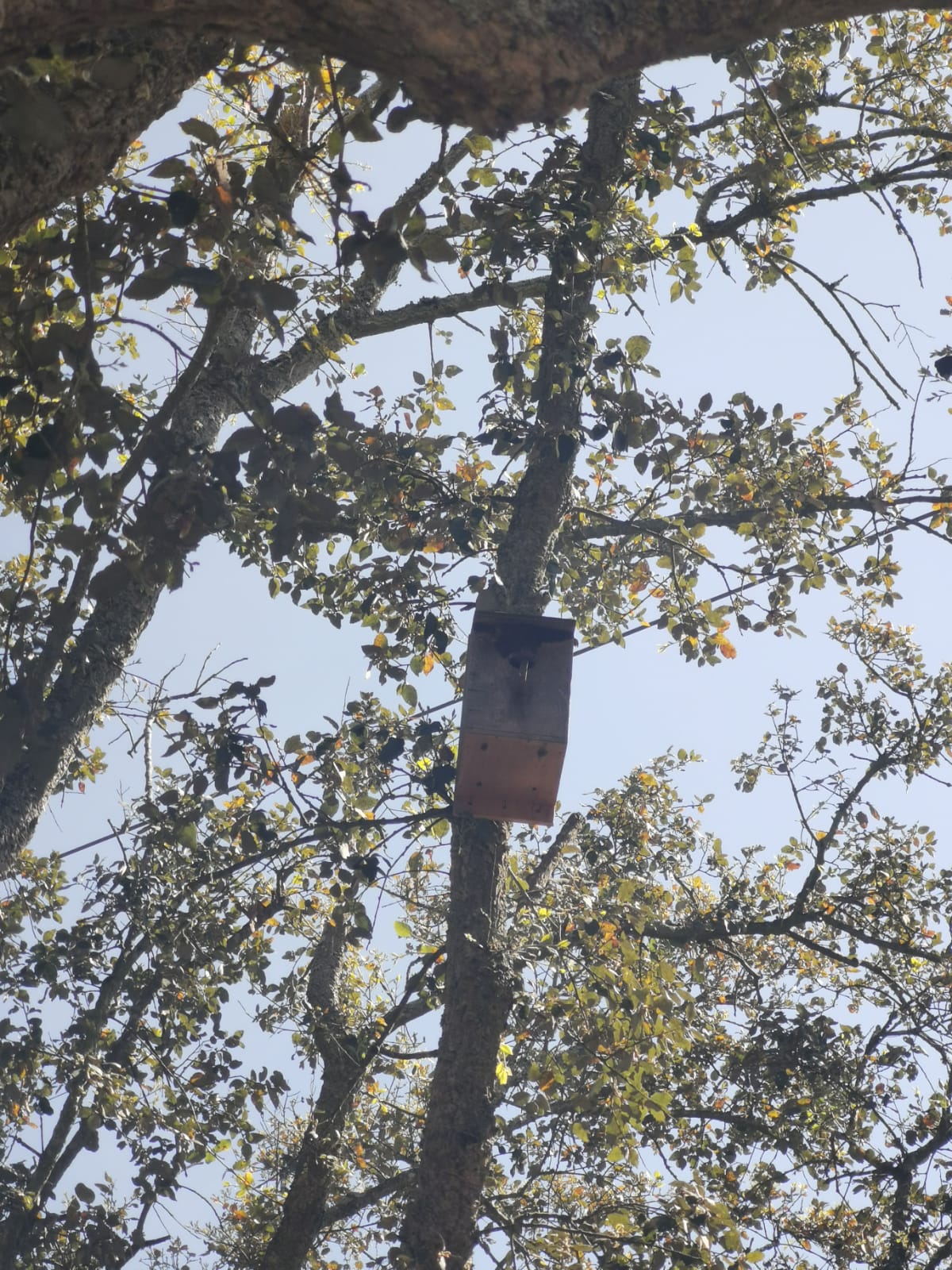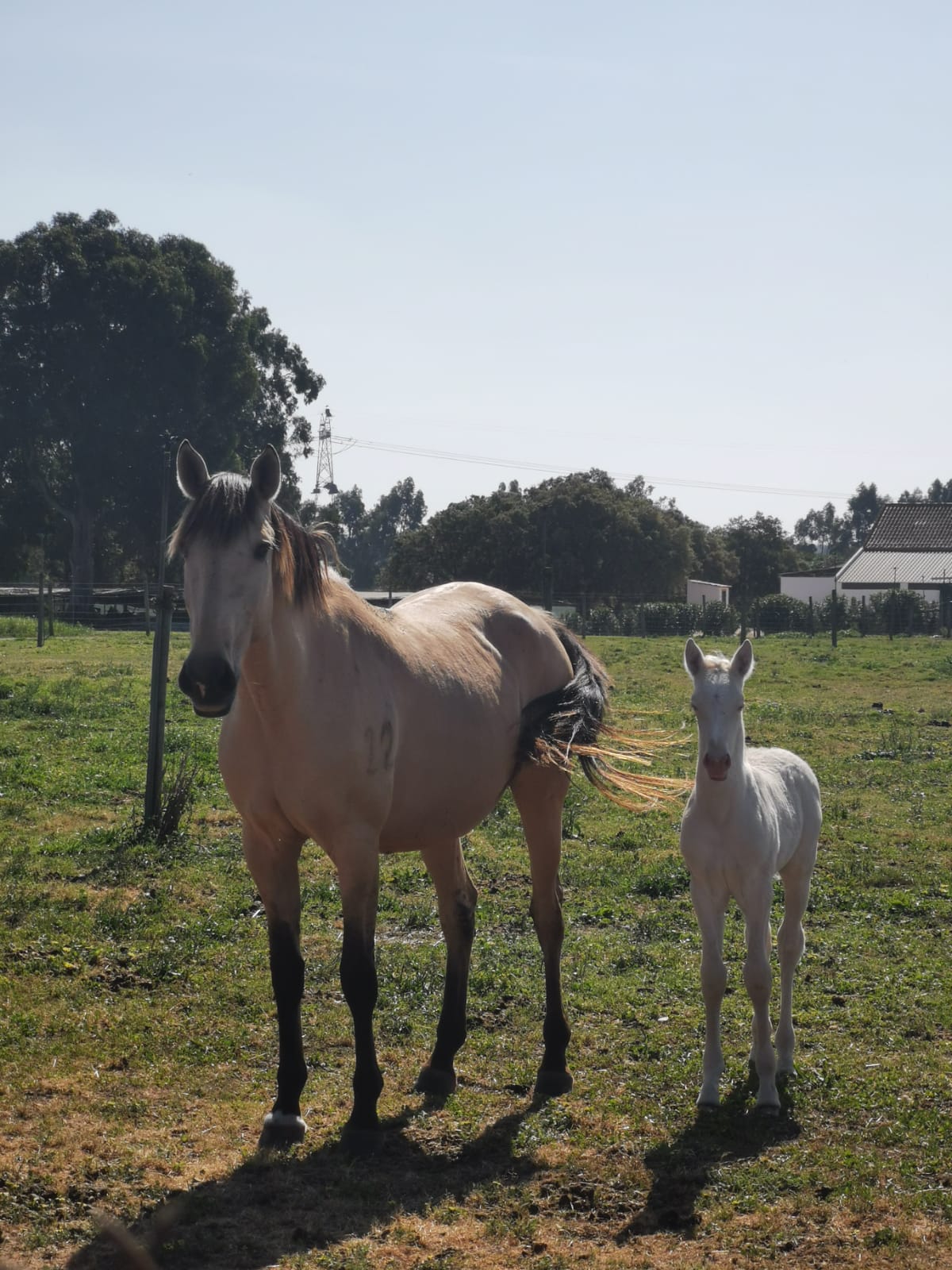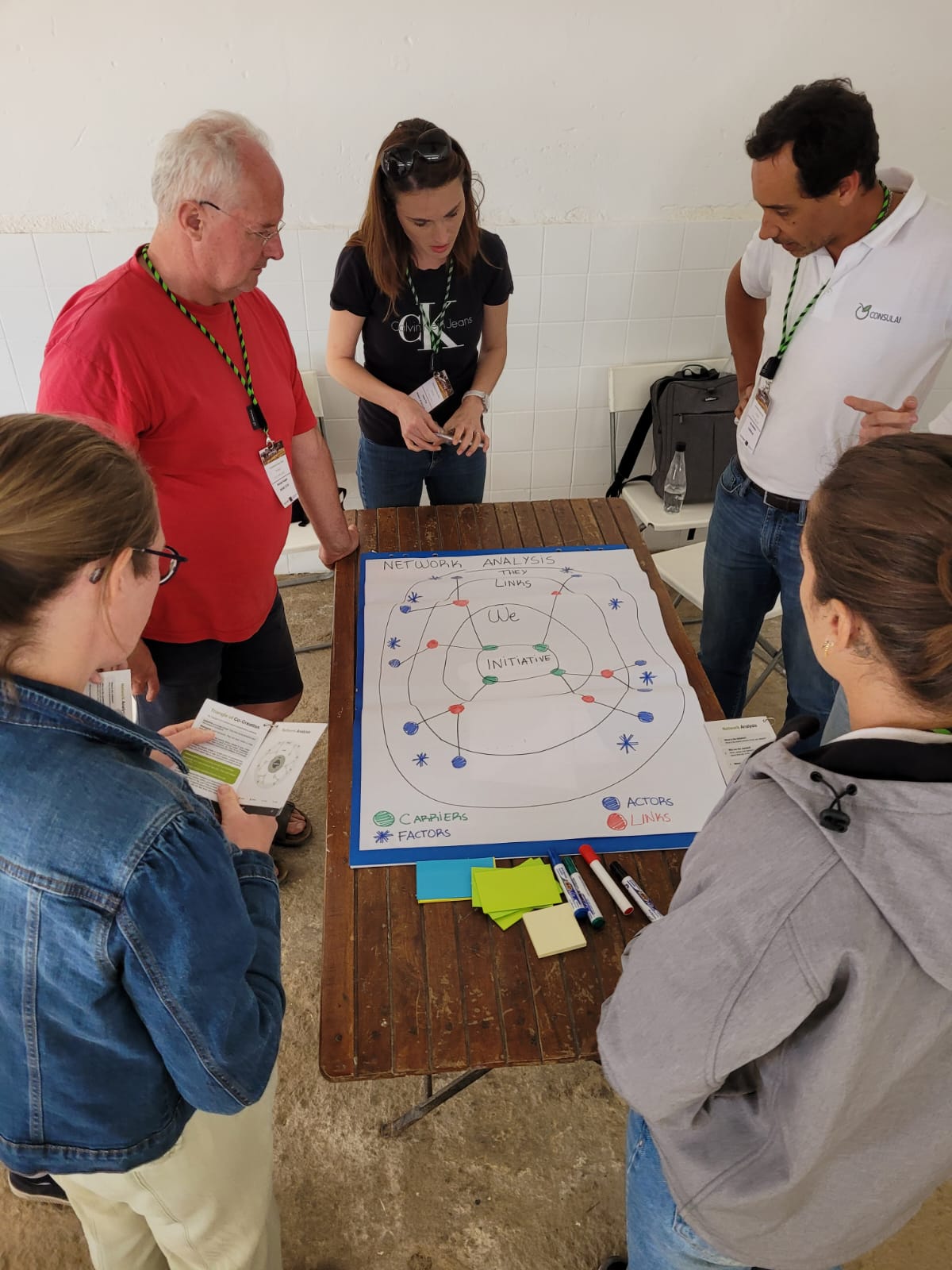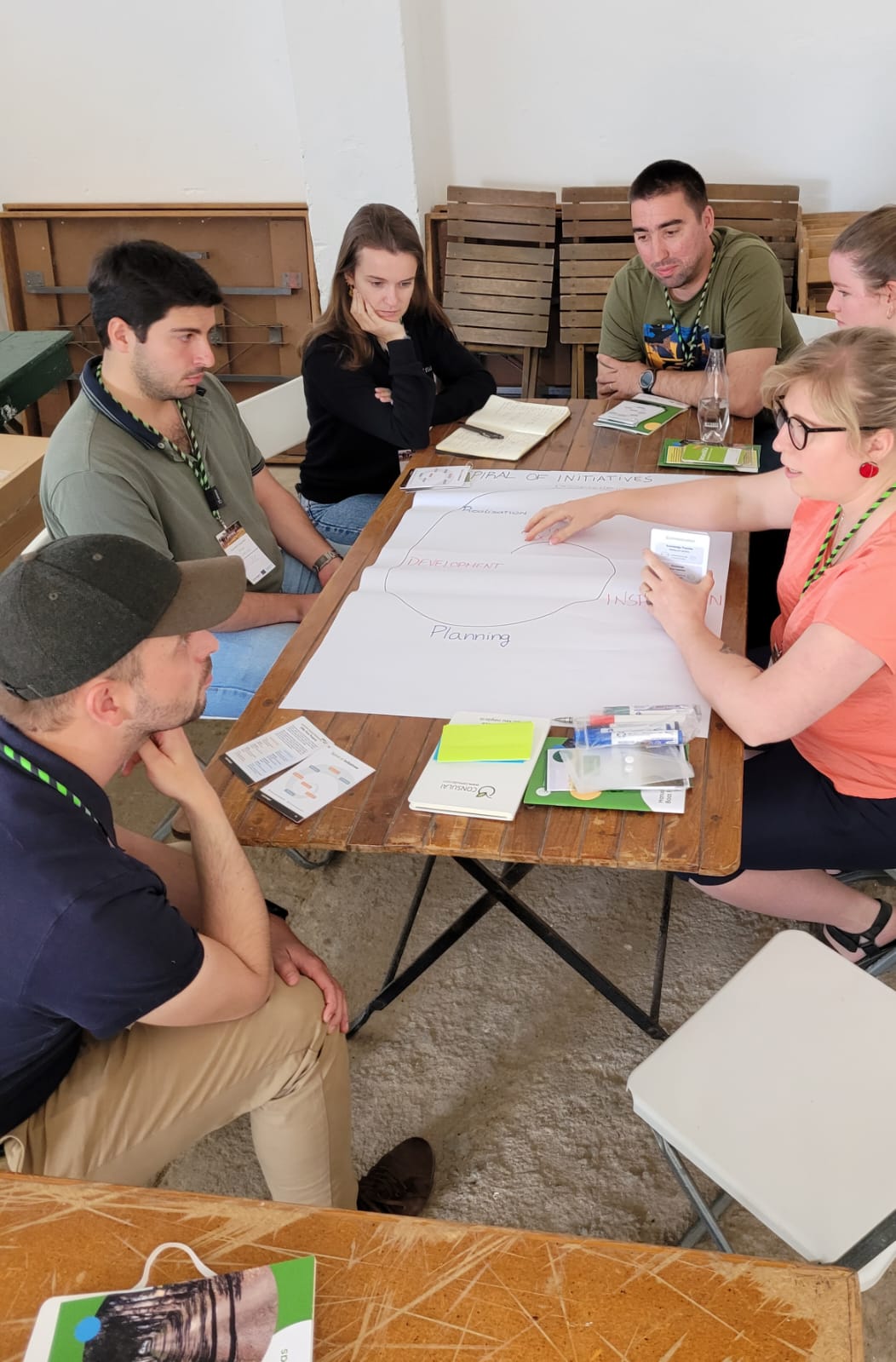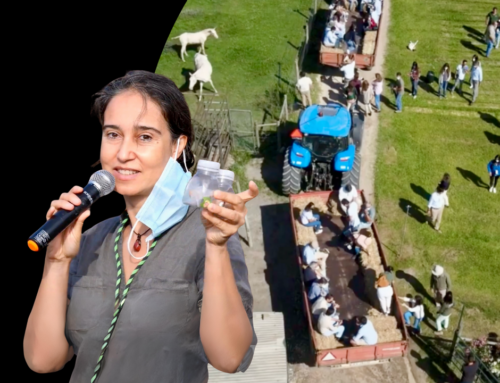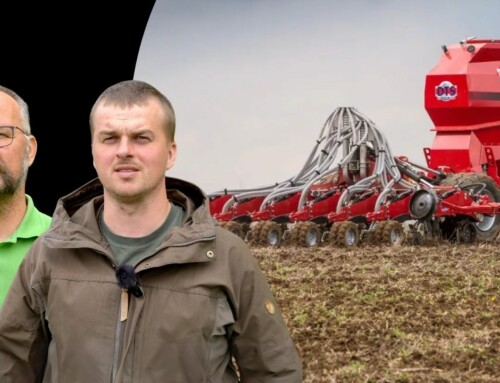From the 19th to the 21st of April a group of i2connect trainees who have successfully completed their training on interactive innovation co-creation methods went on a cross-visit to Portugal to learn more about Portugees agriculture and apply the methods in real life by analyzing the Innovation Spiral that led to the creation of the project “Segunda Via – Ecological Intensification of Agriculture”. This project aims to develop a modern agricultural management model that reconciles the profitability of agricultural production with conservation and restoration practices of ecological habitats. Developing a model of an environmentally responsible farm, while capitalizing on the extensive natural capital existing on its grounds, which can be widely replicated in its region (the surrounding areas of the Tagus River) and throughout the country. The project working group includes the farmer, faculty (Faculdade de Ciências da Universidade de Lisboa), two public entities (EDIA and Fundo Ambiental), an advisory services company and our i2connect partner organization (CONSULAI). CONSULAI was founded in March 2001. Since then, it has become the largest consulting company in the agribusiness sector in Portugal, basing its activities on long-term relationships with clients, responding to their needs, promoting their competitiveness in the market, the quality of their products and their economic results. The average utilized agricultural area in a farm in Portugal is 14 ha and the most produced products are:
- Olives for olive oil
- Grapes for wine
- Cereals (maize, oats, wheat, rice,…)
- Nuts (almonds, walnuts, and chestnuts)
- Citrus and other fresh fruits (oranges, apples, pears, cherries)
- Vegetables for industry and fresh vegetables (potato, tomato)
Learn more about Portuguese agriculture here! Portugal is one of the largest world producers of cork and participants had the chance to visit a 550-ha farm just 30 km from Lisbon, where the owner has diversified his farming. It includes livestock farming (fighting oxen, beef cattle, and sport horses), cereal farming (barley, wheat, maize, peas, sunflowers), and agroforestry where cork trees are grown and cows and horses graze among them.
Cross-visit participant from Latvia Linda Šarķe-Fedjajeva shares her impressions: “The farmer is curious and open-minded, when asked how he knows his experiments will succeed, he laughs off that if you don’t try it out, you will never know the outcome. His passion is new technologies, his challenge is to leave the land and the farm to his children in better condition than he received it from his father. He has introduced a number of biodiversity measures on his farm – he has sown flower strips around the fields to attract pollinators, he has placed bat and bird cages in trees to increase the number of natural enemies for several insect species, he is a fan of precision farming and uses drones to monitor the fields. He uses open satellite data to analyze the state of his fields. What is more interesting is that he only owns part of the machinery he needs, the rest he buys as a service. This is more cost-effective than maintaining the entire machinery fleet.
And now a little about cork trees, which is a complete novelty for me! Did you know it takes 40 years to get the first halfway valuable crop of cork?! A cork tree grows slowly, like an oak tree. The cork layer regenerates and can only be removed every nine years. The forestry advisor who accompanied us on this visit assured us that the tree is not harmed by the removal of the cork layer. In fact, after 40 years of growth, only the lowest quality cork can be obtained, which still does not produce the corks we see in wine bottles. The ‘harvesting’ of the cork tree is a laborious task requiring specific skills and knowledge. It is not taught in schools and is a craft that the apprentice takes over from the master only by doing. It takes 2-3 people to work one decent tree (about 300 years old) and they would do the job in 2 hours. The work is well paid, but there are fewer and fewer craftsmen who know how to do it. Unfortunately, cork tree planting is also quite unpredictable. A couple of years ago the owner planted a large stand of young trees, of which only a few survived. Interestingly, cork can only be harvested if there is enough moisture in the soil. If the soil is dry, it is almost impossible to harvest the cork and you have to wait for the next year to do so.
It is so wonderful that many people are listening to his experience and are less and less afraid to experiment in their own fields!”
Ecological Focus Areas (EFAs) are landscape features, whether green (vegetation) or blue (water), that enhance and provide ecological benefits, either directly or indirectly. Each feature has a certain potential impact on ecosystem services and biodiversity, resulting from its own configuration and characteristics.
Apart from understanding the impact that EFAs have on ecosystem services and biodiversity, it is important to understand the influence that EFAs have on their surroundings. In fact, the impact of maintaining or installing EFAs is affected by the existence or connectivity to other contiguous structures. Generally, the individual value of an ecological focus area increases when there are other EFAs in its vicinity. You can learn more about the identification of best practices that promote ecosystem services and biodiversity by visiting BPA.Eco project!
